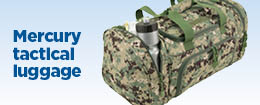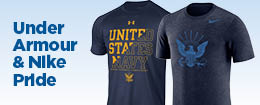OUR HISTORY

The modern day NEX and Ship’s Stores you shop in today are vastly different from the ones that originated over 200 years ago. NEXs have come a long way since the days when bumboats sold their wares to Sailors aboard naval vessels in the 1800s. Back then, Sailors had to depend on those unreliable boats to get their personal items while aboard ship. The bumboats, small vessels that pulled alongside U.S. Navy ships, exchanged merchandise for money by pails lowered over the side by the crew of the Navy ship. Goods sold by the bumboats were normally inferior and were very high priced.
As an alternative to bumboats, many Navy ships operated canteens or "slop chests" so that the money spent by the crew members stayed on the boat to improve the quality of the food served by the general mess. The canteens were often financed by the crew with an agreement with the Ships captain and were managed by the Ships paymaster, the forerunner of today's Supply Officer. The merchandise was bought on a consignment basis, but because of the movement of the ship, payment for the merchandise was often difficult. Because of this problem, many people in the Navy thought canteens reflected poorly on the integrity of the service.
The first canteen opened on USS INDIANA in 1896 and sold only beer. Soon canteens started carrying tobacco and other items for the Ships crew to purchase. The increased profits from these sales went to support welfare and recreation purposes aboard each ship.
By 1909, the Naval Appropriations Act established the first official resale activity, the Ship’s Stores and Commissary Stores. The act allowed the Navy to procure and sell merchandise to Navy and Marine Corps officers and enlisted men and to civilian employees at naval stations outside the continental United States. The Ship’s Stores were authorized to make a profit, as long as it did not exceed 15 percent. Unfortunately, ships’ stores did not produce sufficient revenue for financing the welfare funds. So, in 1925 the Ships Service was created to provide Navy crew members nearly any legal article of merchandise without the profit restrictions placed on the Ship’s Stores. However, these Ships Services had no foundation in law.
It became clear by 1942 that there was no need or space for two service type Ship’s Stores aboard Navy ships. A recommendation was made to the Chief of Naval Operations by the Supply Officer, U.S. Atlantic Fleet to merge the two stores into one official Ship’s Stores operation. The recommendation was accepted and by 1944 the Secretary of the Navy made the establishment of the merged stores mandatory on all ships that had a Supply Officer and permissive on all naval activities.
Ships Service Stores ashore also began steps towards centralization in 1945 when a committee was formed to study the resale activities. The recommendation of the committee, headed by Capt. Wheelock H. Bingham, SC, USNR, was that all resale activities be operated like a large chain of retail stores and that a central office be established to oversee the operation of the Navy Resale System.
The Secretary of the Navy gave his approval of the Bingham Plan that stated, in part, that the Ships Service Stores Ashore be operated with non-appropriated funds and that civilians should fill positions at the operating level. Top management positions, however, would be filled by Navy Supply Corps officers. Naval personnel were also to operate the Ship’s Stores Afloat and the Ships Service Stores, which would be merged into one program and renamed the Ship’s Stores Afloat Program.
The new central office for the Navy Ship’s Stores Office was established in Brooklyn, N.Y., on Apr. 1, 1946. This office was later renamed to “Navy Exchange Service Command,” eventually relocating its headquarters to Virginia Beach, VA, in 1993.



 MAIN MENU
MAIN MENU














